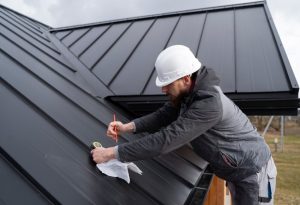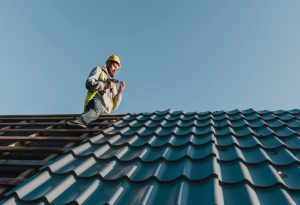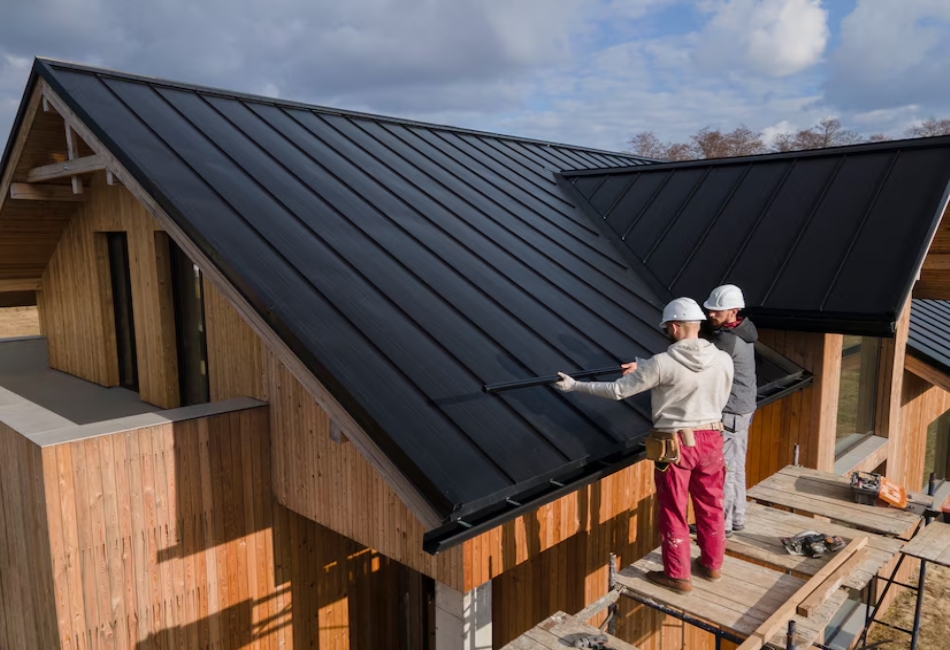Your roof is often the closest to a fierce storm or sudden hailstorm, leading to property damage.
Some of the destruction may be obvious, like missing shingles or visible leaks. Contrarily, other damages, such as bruised shingles or compromised flashing, are subtle and can easily be overlooked.
That said, even a little damage can easily turn into major structural problems without immediate attention. This is where professional roofing companies come in. They have the expertise, tools, and trained eyes to uncover hidden damage. As a result, you can avoid costly repairs later on.
Their skillful assessment can also bring you peace of mind and spare you from the headache of whole roof replacement.
Want to know how they assess roof damages? Continue reading!
In this article, we will break down the inspection process and what you can expect at every stage as a homeowner.
Step-by-Step Inspection Process
Below are the main steps a roofing company takes when assessing the condition of your roof.
1. Scheduling a Professional On-Site Inspection
Scheduling an on-site inspection is the first step in assessing your roof after a storm by a trusted roofing company. Their skilled professionals check your roof for damage thoroughly, like missing shingles, dents and granule loss. Plus, they assess your attic or ceiling for leaks, water stains or structural problems.
In this context, as a homeowner, your input is valuable.
So, if you see any new leaks or waste dripping during the storms, be sure to tell them about it.
Furthermore, these professionals are also aware of the local conditions of your area. That helps them adjust their inspection processes to see the issues that local homes are prone to face the most.
This is why, when you select a roofing company, you should ensure they have a knowledge of your local weather conditions.
For example, if you live in Lincoln, NE, you should opt for reliable roofing management, that are aware of your area’s climate conditions. In turn, they will be able to assess your roof more effectively related to common hail and wind damage in your district.
2. Complete Roof Review and Damage Identification

Upon the start of the inspection, the roofing professionals will thoroughly check your roof’s state. It includes critical areas, such as seams, flashing, vents, drains, and penetrations, like skylights or chimneys.
They also evaluate your roof’s overall age, the condition of the materials, and the state of your home’s structure. So they can see how your roof fared during the storm.
Further, the roofing team will examine all accessible roof areas (depending on the weather) to document even the slightest signs of damage, like small holes, loose shingles, or weak spots.
They even check your gutters and downspouts for granule buildup, a possible sign of shingle deterioration.
This detailed overview will tell you if your roof needs only minor repairs or if it needs more substantial attention now.
3. Get a Detailed Roof Inspection Report
After the roof inspection, the company will offer you a detailed photo report of their findings. In this report, problematic areas are included, like a puncture, worn or torn shingle, rusted flashing, clogged gutter, or hail impact marks. These pictures are of high resolution, along with a short description of why their repairing matters.
Such visual format also makes it easier for you to understand the condition of your roof, even if you aren’t familiar with roofing terminology. It is also helpful documentation for filing a homeowners insurance claim.
Some companies even compare previous inspections (if any) so you can see how much your roof has aged or degraded over time.
Overall, this professional report provides you with a profile of your roof’s health.
As a result, you can decide what action to take next, either having repairs done right away or delaying it for the future.
4. Understand Your Complete Roof Audit
A full audit goes beyond basic observations provided by the roofing company.
Each issue found in this audit is broken down by severity and placed into one of three categories: ‘urgent,’ ‘moderate,’ or ‘monitor.’ It helps you identify what needs to be attended to right away and what can be addressed later, given your budget.
Along with identifying problems, this audit can comprise suggestions, like short-term solutions, preventative maintenance recommendations and long-term strategies. These suggestions help you keep your roof in top shape. You can also get an idea of how long it might take for each repair and what materials will be required.
Moreover, this audit report ensures everything meets current safety standards and is ready for potential insurance claims.
So, you can use these inspection details for a clear action plan to protect your home, save money and plan ahead with confidence.
5. Follow Up with Repairs or Replacement

When you do decide to proceed with repairs or a total roof replacement, the roofing company will handle everything. They will carefully select the right materials, get the necessary permits and take care of installation for you. Besides, many roofing companies offer valuable post-installation services like:
Warranty of workmanship: Assurance that your roof has been installed correctly and according to certain high standards.
Guarantees on materials: Guarantees the quality and durability of the materials used.
Condition inspections: They check your roof after completing the job to ensure its functionality is ideal.
Therefore, working with a licensed, trusted, and local roofing contractor relieves you of the worry, as their services are up to current building codes. That guarantee protects your investment in roof repairs or replacement, and your home remains safe for years to come.
6. Preventive Tips and Maintenance
Roofing companies provide useful tips after your roof is repaired or replaced to help protect it in the future. Some key suggestions include:
Trim trees back from your roofline: Don’t allow branches to touch or fall on the roof during storms.
Regularly clean your gutters: Ensure water doesn’t build up and damage your roof.
Schedule annual roof inspections: It is helpful to catch any small problem before it becomes a major issue.
Choose impact-resistant shingles: This is a good option if you live in areas prone to hail.
Additionally, many companies offer maintenance plans to keep your roof in perfect condition, addressing any concerns before the next storm happens.
Conclusion
A well-maintained roof is essential to protecting your home from the elements and preserving its value.
That said, roofing companies play a crucial role in ensuring your roof stays in top shape. They offer thorough inspections, timely repairs, or expert replacements.
On that note, their meticulous assessment process includes on-site inspection, damage identification, detailed roof report, and audit, followed by roof repair. Plus, they give preventive tips for maintaining your roof in perfect condition all year round.
So, ensure to use their services for your roof to get lasting protection and peace of mind after any storm or hail damage.
